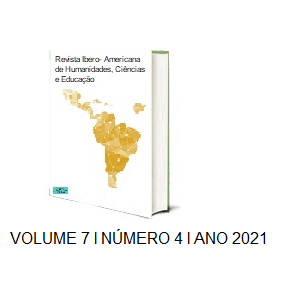O TRANSTORNO DO DÉFICIT DE ATENÇÃO COM HIPERATIVIDADE- TDAH EM SALA DE AULA
DOI:
https://doi.org/10.51891/rease.v7i4.986Palavras-chave:
TDAH. Crianças. Alunos. Pais. ProfessoresResumo
Nos dias de hoje, gostaria de conversar com os professores e falar com eles sobre os benefícios para uma criança, expressando uma preocupação extraordinária e a falta de energia da mídia que demonstra o excesso de energia. Do outro lado dos vegetais, os ensaios são escritos como preguiçosas, mal-educadas, imaturas, entre outras denominações. Isso porque as fatalidades são impulsivas, extremamente ativas e com certos desvios de suas normas normais. Em muitos casos, também há rumores de que você está muito cansado, frustrado e muito constrangido. Claro que existem personagens, podemos apresentar agressividade, problemas no ensino escolar e nenhuma convicção social. Certamente, não nos orgulhamos de que nós, professores e outras pessoas da sociedade que nos convencem a apresentar essas histórias a um novo romance de estresse e serenidade, não tenhamos medo de dizer algo assim. Mas, e essas crianças? Como você posiciona seus dentes? Estamos criando personagens que se reúnem como descrições, como outras, podem apresentar ou como se chama TDAH? Esse é o problema da arte, que se baseia em pesquisas bibliográficas, de abortagem.
Downloads
Downloads
Publicado
Como Citar
Edição
Seção
Categorias
Licença
Atribuição CC BY

